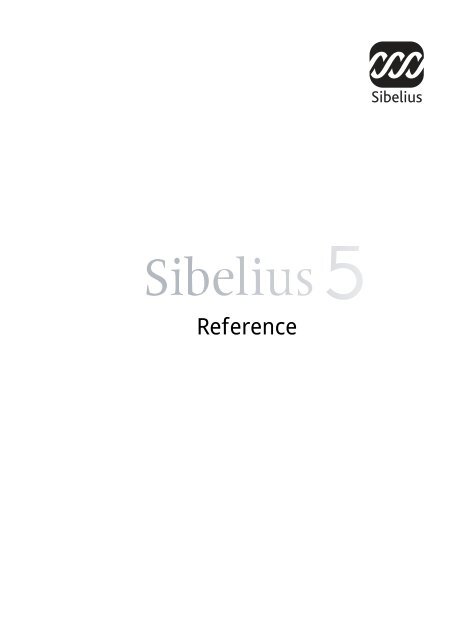

- #SIBELIUS 5 COPY FROM ONE FILE TO ANOTHER HOW TO#
- #SIBELIUS 5 COPY FROM ONE FILE TO ANOTHER PDF#
- #SIBELIUS 5 COPY FROM ONE FILE TO ANOTHER SOFTWARE#
The Finn brothers named their creation after the famous composer Jean Sibelius. In 1993, two twins, Jonathan and Ben Finn, released their new music notation program. One of their bestsellers is their music notation program, Sibelius.
#SIBELIUS 5 COPY FROM ONE FILE TO ANOTHER SOFTWARE#
Keep reading to find out more! ScanScore and Avid’s Sibelius- What’s the Difference?Īvid has always created excellent music software and other digital products.

#SIBELIUS 5 COPY FROM ONE FILE TO ANOTHER PDF#
It takes just five steps to import a PDF file into Sibelius using our software, ScanScore.
it is usual to keep the same staff size for all examples so. save as a "TIFF bitmap" but use higher resolution - I usually use 1200DPI. if you are coding the page yourself, you will find that most servers are fussy about case, so you will probably need to refer to the image with the file extension in capitals (i.e. 
 use an image handling packagae such as Paint to resave as a JPEG. save as a bitmap as above, but for larger graphs you may want to use a lower resolution (ca. you can resize the image by dragging the corners. open the file in Paint or similar, "select all", "copy" and then paste straight into your word processor. export the file as a "BMP Window bitmap" - the default settings are fine but uncheck "Create Subfolder". The way to do this is to use the "File/Export/Graphics" dialog.įor everyday use in essays and handouts. Input the notes you need, using quarters and half notes (crotchets and minims) as appropriate. Using the time signature dialog (press T on the keyboard) create a single bar with roughly the right number of beats for your graph (e.g. The principal is the same but do not input the music. You will need to add carets above the Urlinie numbers as separate characters. Use the "Create/Text/Other Staff Text/Small Text" style as the basis for chords and labels and then change to something like Times New Roman 14 with bold for chords and not for elaboration labels. Flags from the "Create/Symbols" dialog (press Z on the keyboard). Stems and beams from the "Create/Lines" dialog (press L on the keyboard). You can now use the following to add Schenkerian notation
use an image handling packagae such as Paint to resave as a JPEG. save as a bitmap as above, but for larger graphs you may want to use a lower resolution (ca. you can resize the image by dragging the corners. open the file in Paint or similar, "select all", "copy" and then paste straight into your word processor. export the file as a "BMP Window bitmap" - the default settings are fine but uncheck "Create Subfolder". The way to do this is to use the "File/Export/Graphics" dialog.įor everyday use in essays and handouts. Input the notes you need, using quarters and half notes (crotchets and minims) as appropriate. Using the time signature dialog (press T on the keyboard) create a single bar with roughly the right number of beats for your graph (e.g. The principal is the same but do not input the music. You will need to add carets above the Urlinie numbers as separate characters. Use the "Create/Text/Other Staff Text/Small Text" style as the basis for chords and labels and then change to something like Times New Roman 14 with bold for chords and not for elaboration labels. Flags from the "Create/Symbols" dialog (press Z on the keyboard). Stems and beams from the "Create/Lines" dialog (press L on the keyboard). You can now use the following to add Schenkerian notation #SIBELIUS 5 COPY FROM ONE FILE TO ANOTHER HOW TO#
I haven't worked out how to do this on Sibelius 5 yet - any ideas?
in Sibelius 4 you can hide the end of the stave by changing it the stave type to hidden. if you only want on Schenker stave, just delete one. change half and whole notes (minims and semibreves) to quarter notes (crotchets). remove all articulation - you can use the Advanced Filter to do this quickly and easily (CTRL+SHIFT+ALT+F). copy and paste the piano score music onto these staves. use the "Layout/Instruments and Staves" dialog box (press I on the keyboard) to add a "Schenker Graph" pair of staves. create an ordinary piano score and input the music as usual. In the far right hand column (Instruments not in ensemble), find your new "Schenker Graph" and click on "Add to Family". Click OK twice to get back to "Edit Instruments" dialog. In the "Notes and Rests" tab, deselect "Rhythms" and "Bars rest". In the "General" tab, deselect "Barlines". Change "Name in dialogs" to Schenker Graph (delete the text in the next two fields). In the right-hand half of the dialog box select "Piano" and then click on "New Instrument". Click on "Common Instruments" and then "Others" in the left-hand half of the dialog box. Sibelius makes foreground analysis very easy to notate indeed. Tom Pankhurst's Guide to Schenkerian Analysis - Sibelius 5








 0 kommentar(er)
0 kommentar(er)
